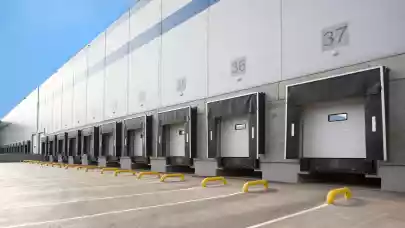
Robert Snincak, Head of Investment Operations CEE and Krystian Pachowka, Head of Logistics Asset Management CEE at CBRE Investment Management talked to Property Forum about the current investment trends in CEE countries, the rise of the warehouse and PRS markets in Poland and the recent changes in financing conditions.
Congratulations on buying the Nexus portfolio of eight prime warehouses in Poland in one of the largest deals on the Polish property market in 2021. It is not so easy to find and buy – for a reasonable price – such sized prime portfolios in Poland these days, the competition is getting fierce…
Thank you. The assets were secured on behalf of our client, who appointed us to build a strong and stable portfolio. This is easier said than done: it isn’t always easy to find the right product at the right price. We are highly selective and focus only on investments that meet our stringent investment criteria. But once we’ve identified an opportunity, we can move fast – something that our business partners, vendors and due diligence advisors always appreciate.
You are right that there are many investors looking for similar assets types, particularly in the logistics market, so the bidding process is very competitive. It is important to bring something else to the table, other than just sharp pricing. For us, that something is credibility, a strong track record and the conviction that a deal will go through.
How long will the star of warehouses shine on the CEE investment map? For now, it looks like everyone is withdrawing the capital from retail and office and putting them into warehouses and the private rented sector (PRS)…
The logistics sector has been the clear winner throughout the pandemic and it seems we will continue to see strong investor appetite for this sector. At the same time, there have been fewer transactions in the retail and office sectors during the pandemic. And this is fully understandable – pricing for these assets is compromised at the moment, and landlords do not want to lose out. But both these markets still offer strong fundamentals, and we see the retail sector bouncing back with strong footfall and turnovers after the pandemic.
But the capital has to go somewhere: with the concerns surrounding retail and office markets coinciding with an ongoing logistics boom, a large portion of that capital has been absorbed by the latter sector. We believe logistics will continue to perform well: the recent demand for warehouse space has been unprecedented, driven by several factors like the rapid growth of e-commerce and near-shoring. Both of these trends will stay with us in the post-Covid economy, sustaining strong occupier demand.
But the market cannot grow at this pace forever. There is currently c. 3.7 million sqm of modern warehouses under construction, while the total stock is at 22 million sqm. This is a pretty substantial expansion. Until now, demand has been outstripping supply and this new space will find its tenants too, particularly when the economy is growing at above 5% GDP. But going forward, the supply must be tapered, as the GPD is forecasted to slow down a bit. Secondly, given recent inflation patterns, investors will need to keep an eye on rental growth.

Robert Snincak
Head of Investment Operations CEE
CBRE Global Investors
Do you think that demand for office space in Poland may shrink in the long run?
There are two sides to this coin. At the start of the pandemic, many occupiers opted to sublet their redundant spaces. Since then, occupiers have changed their minds and chosen to keep space for their own needs. This is clearly a positive sign for the market. Some occupiers are planning to convert open-plan spaces into single-person offices and create large meeting rooms or common areas, which will result in an increase of leased area per person. But on the other hand, many tenants are planning to reduce their office footprints, as employees choose to work from home. For now, it is still difficult to predict which trend will win out, and many tenants are taking a ‘wait and see’ approach, resulting in short-lease prolongations.
Investors, too, remain undecided, though we have seen many betting on the revival of the pre-Covid office setup, and the decline of current peak vacancies. This will increase investment volumes. In Warsaw and in regional markets, there is less new demand, resulting in increased vacancy rates. But there is also less construction going on, so we assume the office market will find its balance shortly.
Retail properties: forced marriage with e-commerce or a dire need to develop a brand new, post-pandemic identity?
There is a growing group of investors with their eyes on the retail sector. The damage to the retail sector is not as bad as anticipated and some retailers have managed to find a new modus operandi, one that combines the advantages of traditional brick-and-mortar retail with online shopping models. Of course, it will be up to the customer to decide which retail model is the most attractive, but – judging from the post-lockdown footfall figures – it is clear that people like shopping. This is positive news for the retail sector and we believe the future for retail in 2022 is bright.

Krystian Pachowka
Head of Logistics Asset Management CEE
CBRE Investment Management
Is CBRE IM considering joining the fray on the rapidly developing PRS and PBSA markets in Poland?
PRS is a very interesting and rapidly developing sector in Central Europe. Our residential platform, which focuses on key European markets and cities, is gearing up for dynamic growth and, in the not-too-distant-future, we expect to enter CEE markets. For now, we need to see how the sector matures, especially with regard to the professional management of residential projects. Looking at the PRS sector in Western Europe and the trends among younger generations, we have no doubt there is a lot of room for long-term growth.
Investors from which parts of the world will be active on the Polish market in the coming quarters?
For some time, Poland has been attracting investors from Western Europe, U.S., Asia and South Africa. We believe these investors are here to stay, with plans to invest more or there will be new investment mandates from these regions. For example, there are indications that Asian investors will be buying up Polish real estate in the coming months. This should add more liquidity to the market and help it to mature further. We also think that Poland and the Czech Republic will be a target for the vast majority of institutional investors when speaking about Central Europe, and there will be a significant expansion of investors with CE domicile into Poland, as we have seen in previous years.
Do you expect any changes in financing conditions in the nearest future?
Yes, and it is already taking place. Commercial banks follow the decisions of central banks and the interest rates have already started to rise. We also see that banks are revising LTV or LTC levels. This mainly relates to the retail sector, for which banks have little appetite - they would rather prolong exisiting loans with tighter covenants, rather than provide financing to completely new schemes. For logistics operators, the appetite is strong, so investments in good locations with strong tenants can secure very competitve rates.
On the other hand, financing banks are devoting more and more resources to better understand individual investments, lease agreements and tenants profiles, to better forecast cashflows and reduce risk. The coming months will probably bring further increases to interest rates; the higher cost of debt will negatively impact some of the investments and enforce investors to reassess their transaction plans.
What are CBRE IM’s investment plans in Poland for the next 12 months?
At the very least, we will be as active in Poland as in 2021. Across the business, we have ambitious growth targets for 2022, and we are aiming to significantly increase the size of our portfolios.



